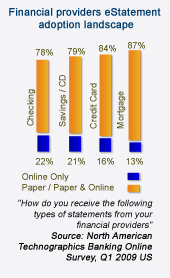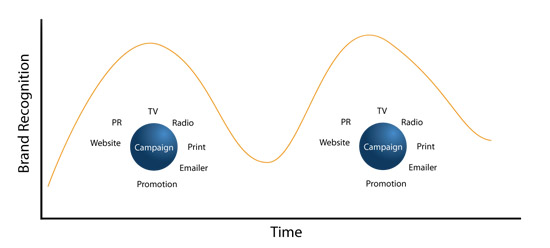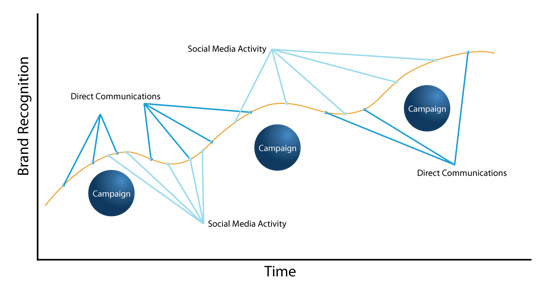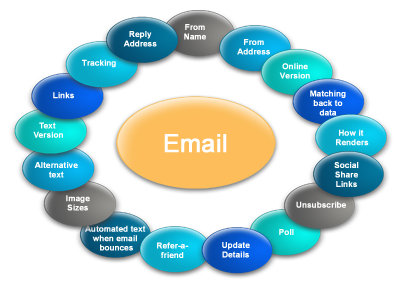My first two
blog posts on this subject dealt with why consolidators here in the US will never work. In today's post, I cover the comparison between eBill / eStatement consolidators and true electronic delivery solutions:
There are five primary areas where email delivery of bills and statements succeeds, where consolidators have and will continue to fail.
1. Biller and consumer critical mass:
Why consolidators fail: To benefit consumers; consolidators should have the majority of a customer's bills in a central location. Due to the size of the US biller market this is simply impossible.To date, even mature consolidators that have been building a base for several years, have failed to exceed 20% of the average household's bills. The new entrants to this segment are yet to realize the futility of this endeavor.
On the flip side however, biller's won't subscribe to a service without a significant percentage of their consumers already enrolled. A true chicken and egg scenario.
Why email delivery succeeds: As the bill is delivered directly into the customer's inbox, it makes no difference whether it is one email bill or several a month. Just like in the physical mail scenario, getting one bill or many is just as convenient for both biller and recipient. Most importantly, it gives each and every biller the ability to deliver bills to their customers, without the need for a location to gather a critical mass of consumers.
2. Registration / enrollment:
Why consolidators fail: A recent survey conducted by InfoTrends showed that of the 1,042 consumers surveyed, 61% said that remembering multiple unique usernames & passwords remains a significant barrier to paperless adoption. Convincing the majority of consumers to register on biller's websites has proven to be an insurmountable marketing feat. For the consolidator however, it's even worse, as the customer has to have many pieces of information at hand for each biller at that location. Add to this the fact that
consumers do not want another mailbox nor to have to choose and remember yet another username and password.
Why email delivery succeeds: Quite simple - there is no registration process. The bill arrives in the customer's existing email inbox and is opened using a secure 'shared secret' (not a password, rather personal details known to the biller and the recipient). There is no need to choose or remember anything. There are also no marketing dollars required to drive the customer to sign up for anything.
3. Paper suppression:
Why consolidators fail: For a consolidator website to be considered successful at paper suppression by any biller, they will need to achieve suppression rates in excess of 10% per year, per biller. Currently statistics show that less than 5% of consumers enroll at consolidator websites and 50% of those still don't go paperless - the math cannot hope to add up.
Why email delivery succeeds: By delivering the bill or statement as a securely encrypted email attachment, the recipient can opt to go paperless with just one click - no form to complete, no website to visit, no username & password to complete, in fact, nothing to do at all except simply receive an email.
4. Bill stuffers / electronic marketing:
Why consolidators fail: Due to the website nature of viewing bills at a consolidator, within a multi-biller environment and along with the fact that the biller does not have any ownership of the viewing real estate, marketing to consumers at consolidator websites is a considerable challenge, if offered at all. There is certainly no advanced personalization possible.
Why email delivery succeeds: It is automated and extremely cost effective to insert and overlay marketing messages into the body of an email, the white space of the bill and entire pages inserted into the secure attachment. Furthermore, this can be personalized down to the individual recipient, resulting in a bill marketing tool that is significantly more powerful than the paper bill, the biller's own website and definitely any consolidator.
5. Mobile:
Why consolidators fail: Navigating a mobile website or downloading an app is just inconvenient, a poor user experience and requires pre-registration. In addition, paying through a mobile website is an even worse experience than just viewing it. (To date no consolidators have offered a mobile option, but we believe that in 2011 there will be a first attempt.)
Why email delivery succeeds: An email attachment can be opened on any email capable device, without the need for the recipient to do anything. In addition, the same email will be waiting on the recipient's computer for viewing later. Payment can be initiated with just a single click.
And finally it is relevant to point out that where new consolidator entrants are in start-up / concept stage, secure electronic document delivery via email has been successful in 14 countries (including the USA) for 12 years, for more than 250 large Billers and Financial Institutions, including 3 of the top 10 banks).
When considering your paper suppression strategy, do you go with a new idea that has never worked before, but is at best a 'nice' idea, or do you chose a direction with a decade of referencable, proven success stories?
Garin Toren
striata.com
 eBilling
adoption rates have long disappointed the supporters of paperless
processes. While enthusiasts have registered at eBilling portals, many
refuse to turn off their paper safety net. Reasons for this behaviour
range from "my accountant needs it" to "I like to have a copy in my
filing system". Delivering a PDF document by email allows it to be
forwarded immediately and electronically saved and backed up and yes -
it can also be printed, if required. This makes the transition to a
paperless environment less daunting.
eBilling
adoption rates have long disappointed the supporters of paperless
processes. While enthusiasts have registered at eBilling portals, many
refuse to turn off their paper safety net. Reasons for this behaviour
range from "my accountant needs it" to "I like to have a copy in my
filing system". Delivering a PDF document by email allows it to be
forwarded immediately and electronically saved and backed up and yes -
it can also be printed, if required. This makes the transition to a
paperless environment less daunting. 

 So what are the basics?
So what are the basics?